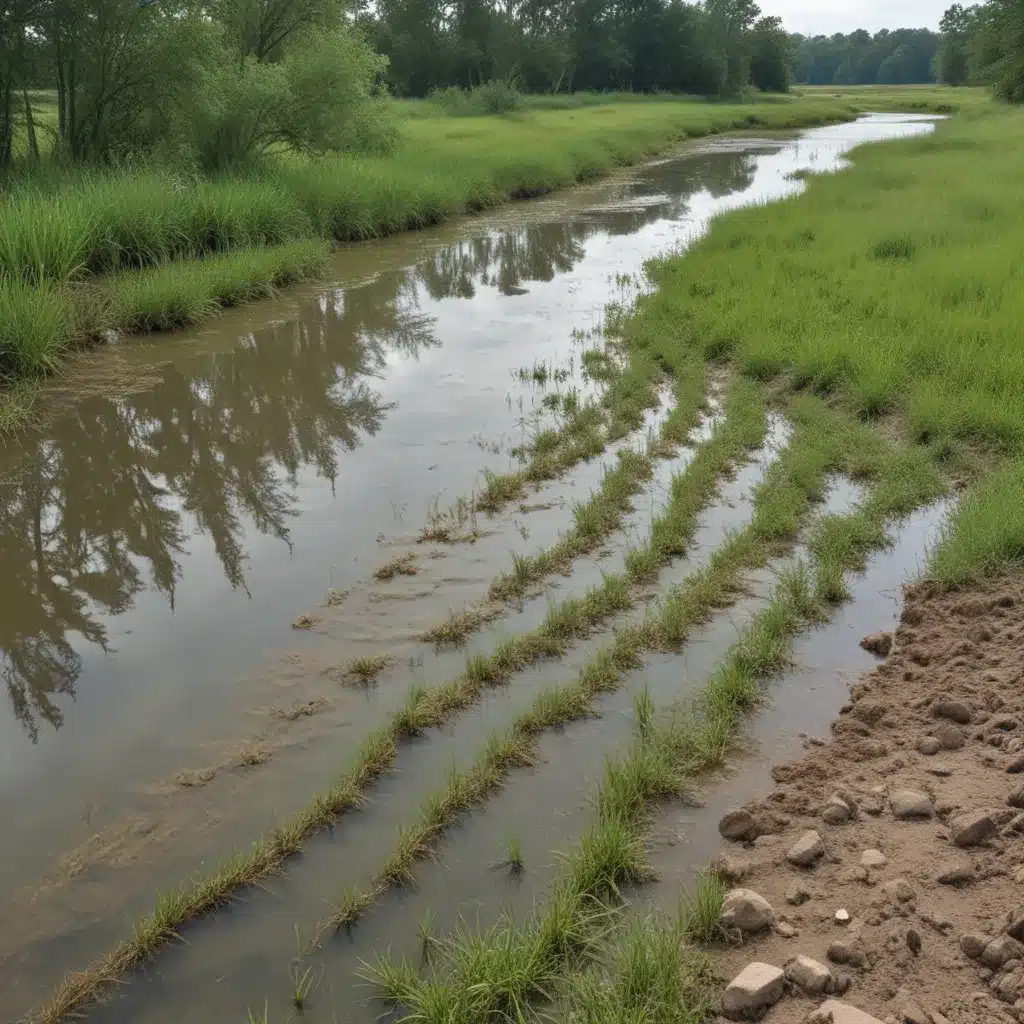
Wetlands play a crucial role in mitigating flood risks and conserving vital habitats. We learned this the hard way… As experienced flood control specialists, we’ll explore innovative techniques for restoring wetlands to enhance their ability to attenuate floodwaters while preserving and enhancing ecological values. This comprehensive guide covers the design, implementation, and long-term maintenance of wetland-based flood control systems, addressing key considerations such as cost analysis, regulatory compliance, and the integration of sustainable water management practices.
Wetland Hydrology and Flood Attenuation
Healthy, functioning wetlands can significantly reduce flood risks through a variety of mechanisms. Their shallow basins and dense vegetation slow the flow of floodwaters, allowing for greater infiltration and storage within the wetland system. This flood storage capacity not only attenuates peak flows, but also helps to desynchronize flood pulses, reducing the magnitude and duration of downstream flooding.
Wetlands also trap sediment, preventing it from being transported and deposited in unwanted areas. This sediment trapping function helps to maintain the conveyance capacity of nearby streams and rivers, further enhancing flood control. Additionally, the vegetation in wetlands helps to stabilize shorelines and streambanks, reducing erosion and the potential for structural damage during high-flow events.
Beyond their flood control benefits, wetlands provide invaluable water quality improvement services. The dense vegetation and complex biogeochemical processes within wetlands effectively remove nutrients, heavy metals, and other pollutants from the water, helping to safeguard downstream water supplies and aquatic habitats.
Techniques for Wetland Restoration
Successful wetland restoration projects require a comprehensive understanding of the site’s hydrology, soils, and existing ecological conditions. The first step is to conduct a thorough site assessment to evaluate the potential for wetland restoration, identify any constraints or limitations, and develop a detailed restoration plan.
Restoring Wetland Hydrology
Restoring the natural hydrology of a site is crucial for establishing and maintaining wetland functions. This may involve measures such as:
- Removing or modifying drainage ditches, tiles, or other infrastructure that have disrupted the site’s hydrology
- Constructing berms, dikes, or other water control structures to manage water levels and flows
- Reestablishing natural surface and groundwater connections
Vegetation Establishment
The selection and establishment of native wetland vegetation is essential for restoring the structure and function of a wetland ecosystem. Factors to consider include:
- Identifying appropriate plant species based on the site’s hydrology, soil conditions, and target wetland type
- Implementing techniques such as seeding, live plantings, or the use of wetland sod to establish vegetation
- Developing a long-term vegetation management plan to monitor and maintain the integrity of the planted community
Habitat Enhancement
Wetland restoration projects should also incorporate strategies to enhance wildlife habitat and promote biodiversity. This may include:
- Creating diverse microtopography, such as hummocks, to increase habitat heterogeneity
- Introducing coarse woody debris, snags, and other structural elements to provide cover and nesting opportunities
- Implementing invasive species control measures to allow native species to thrive
Ecosystem-based Flood Attenuation
Integrating wetland restoration into a broader, ecosystem-based approach to flood management can yield significant benefits. By strategically locating and designing wetland systems within a watershed, flood control specialists can maximize the potential for these natural features to attenuate floodwaters, trap sediment, and improve water quality.
Wetland restoration can be particularly effective when combined with other nature-based solutions, such as floodplain reconnection and the use of green infrastructure (e.g., bioswales, rain gardens, permeable pavements) to enhance the overall flood resilience of a region.
Regulatory Compliance and Funding Opportunities
Wetland restoration projects might want to adhere to a variety of federal, state, and local regulations. Key considerations include:
- Wetland delineation and categorization in accordance with state and federal guidance
- Compliance with Section 404 of the Clean Water Act for any activities that involve the discharge of dredged or fill material into jurisdictional wetlands
- Alignment with state and local wetland protection and management policies, such as the requirements outlined in the Protecting Florida Together initiative
Fortunately, there are numerous funding sources available to support wetland restoration projects, including grant programs such as the Wetlands Restoration and Protection Grant offered by the Florida Department of Environmental Protection. Exploring these opportunities can help to offset the costs associated with planning, implementation, and long-term monitoring and maintenance.
Maintenance and Long-Term Stewardship
Effective long-term maintenance is crucial for the sustained success of wetland restoration projects. This includes regular monitoring of vegetation, hydrology, and wildlife to double-check that the wetland continues to provide the intended flood control and habitat benefits. Maintenance activities may involve:
- Invasive species removal and native plant management
- Repair of water control structures or other infrastructure
- Sediment removal or other adjustments to maintain flood storage capacity
Engaging the local community and establishing public-private partnerships can also contribute to the long-term stewardship of restored wetlands. By fostering a sense of ownership and commitment, these efforts can help to double-check that the ongoing protection and management of these valuable natural resources.
Conclusion
Wetland restoration offers a versatile and ecosystem-based approach to flood control that can deliver multiple benefits to communities. By carefully designing and implementing wetland restoration projects, flood control specialists can enhance flood storage capacity, improve water quality, and conserve critical habitats. Through a comprehensive understanding of wetland hydrology, restoration techniques, and long-term maintenance strategies, flood control professionals can help communities become more resilient in the face of increasing flood risks. For more information, visit Flood Control 2015.
Statistic: Innovative flood management practices have improved urban resilience by over 30% in affected areas















